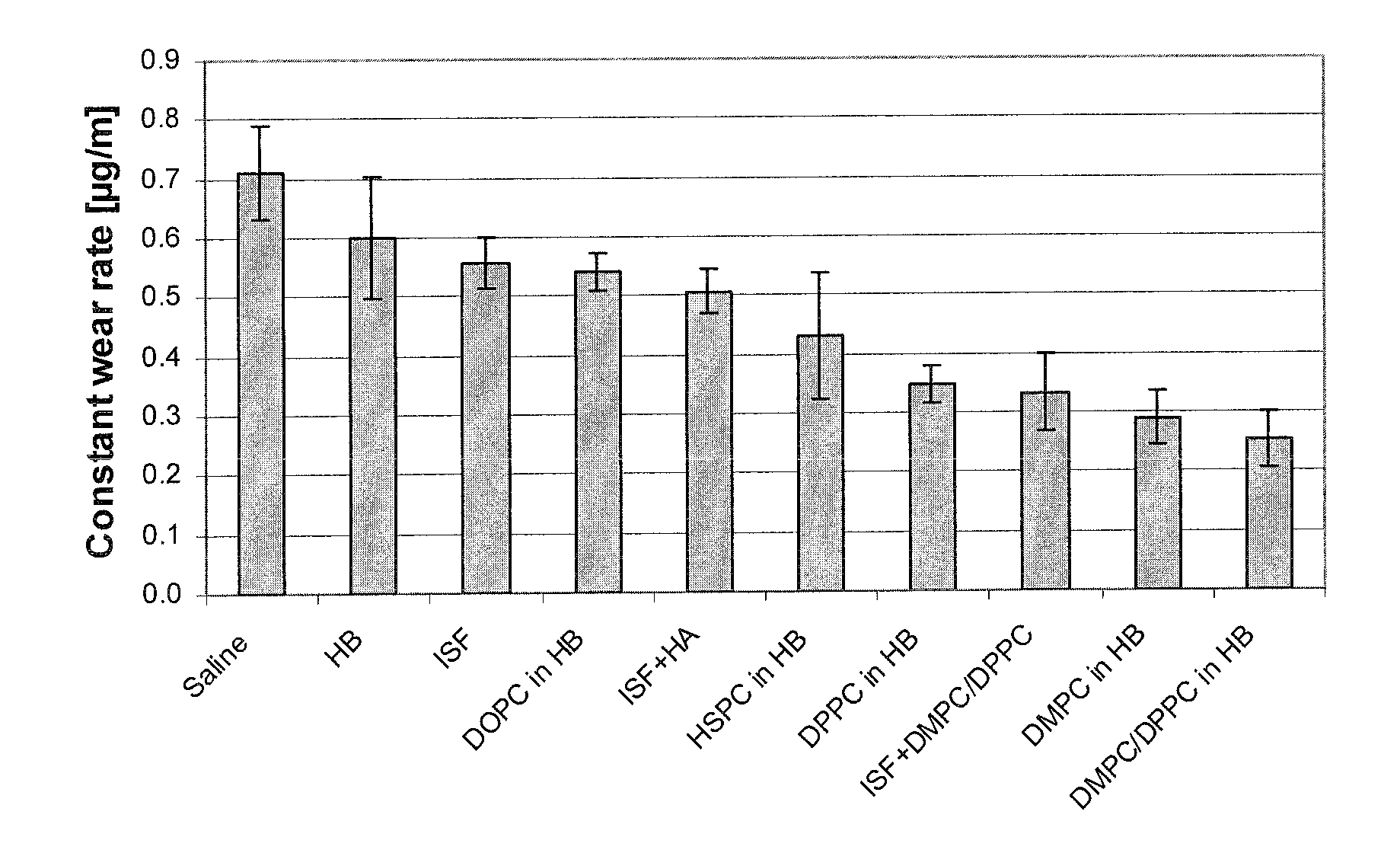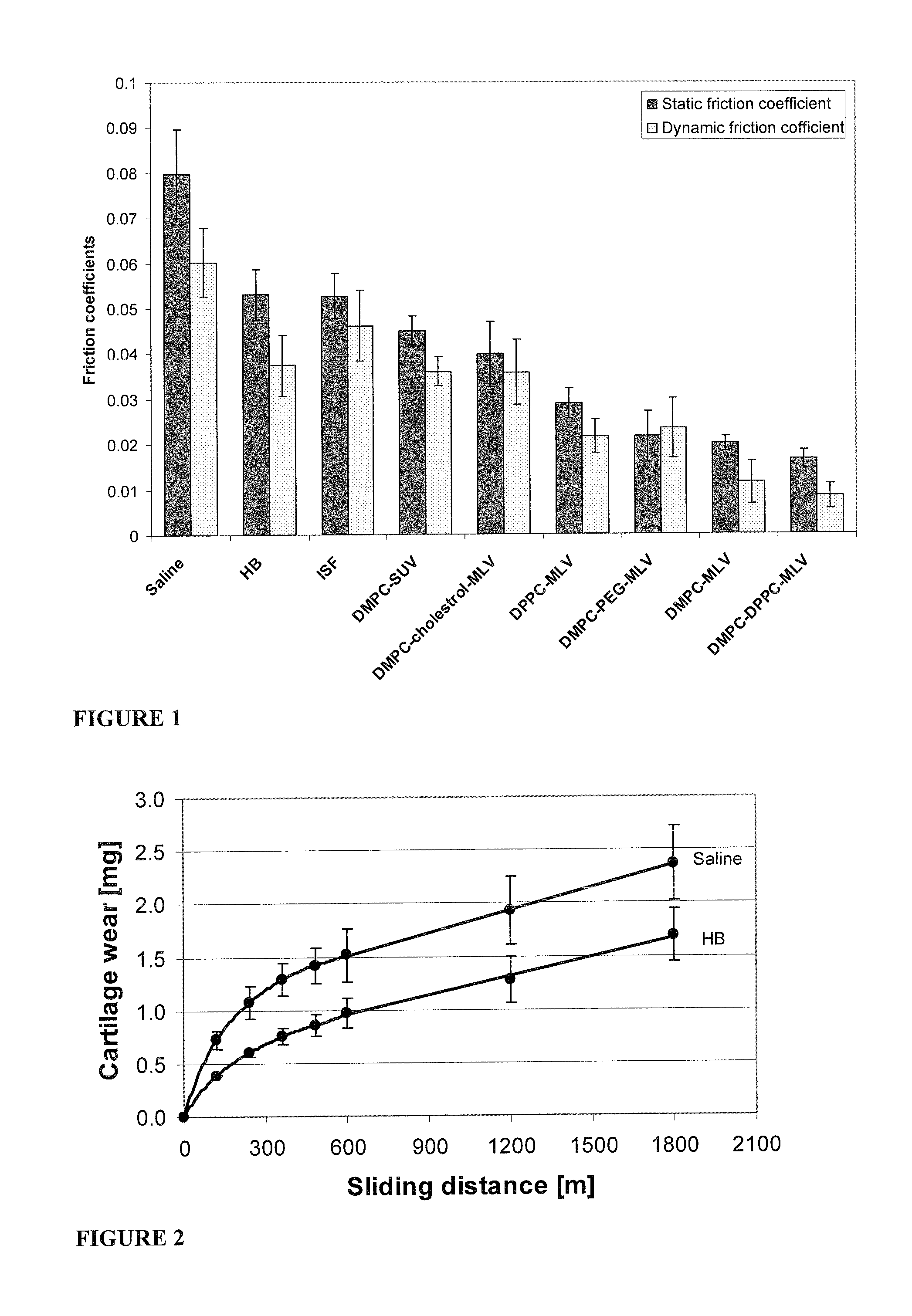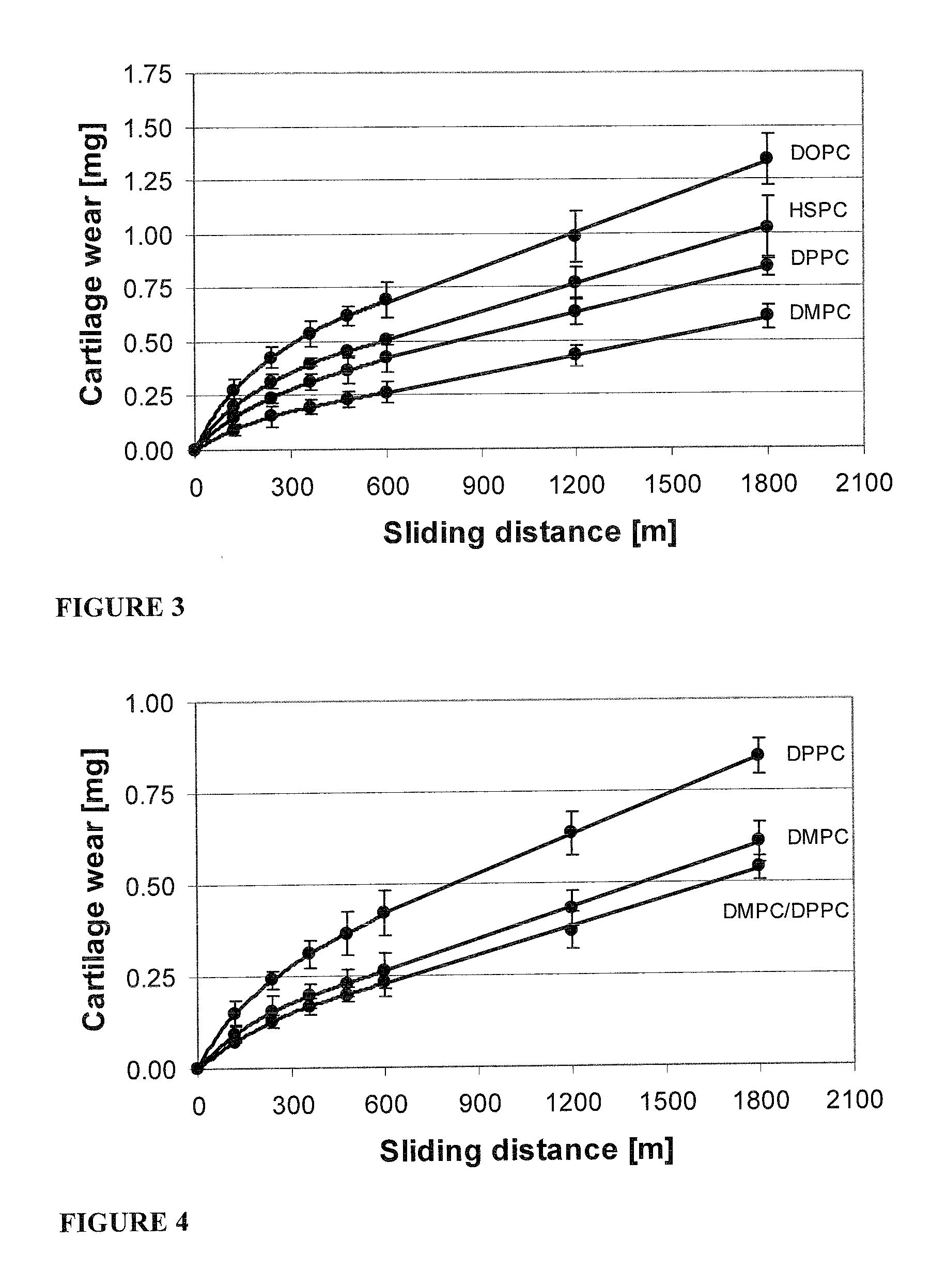Methods for joint lubrication and cartilage wear prevention making use of glycerophospholipids
a technology of glycerophospholipids and joint lubrication, applied in the field of liposomes, can solve the problems of accelerated wear of articular cartilage, affecting a large portion of the population, and affecting the function of joint joints
- Summary
- Abstract
- Description
- Claims
- Application Information
AI Technical Summary
Benefits of technology
Problems solved by technology
Method used
Image
Examples
example 1
Materials and Methods
[0107]Lipids:
[0108]Lipids used in this study and their sources are described in Table 1; all are >98% pure. Table 1 also presents the solid-ordered (SO) to liquid-disordered (LD) phase transition temperatures, Tm, of phospholipid bilayers,34-36 as well as the bilayer state at 37° C.
[0109]
TABLE 1phase transition temperaturesPhasetransitionPhase attemperatureLipidChemical name (source)37° C.(Tm), ° C.HSPChydrogenated soybeanSO52.5phosphatidylcholine(Lipoid, Ludwigshafen, Germany)DPPC1,2-dipalmitoyl-sn-glycero-3-SO41.4phosphocholine(Avanti, Alabaster, AL, USA)DMPC1,2-dimyristoyl-sn-glycero-3-LD23.2phosphocholine(Lipoid or Avanti)DOPC1,2-dioleoyl-sn-glycero-3-LD−21phosphocholine) (Lipoid or Avanti)Mixture ofLD34DMPC / DPPC(0.6 / 0.1)
Water: Water was purified using a WaterPro PS HPLC / Ultrafilter Hybrid system (Labconco, Kansas City, Mo.), providing pyrogen-free water with low levels of total carbons and inorganic ions (18.2 MΩ).
Reagents: All other reagents used are of an...
example 2
Toxicity Study
[0135]The present example was conducted to assess local reactions (histopathology of fermorotibial joint) at different times post intraarticular injection of DMPC-based MLV composed of either DMPC alone or of a DMPC / DPPC mixture (0.6:1.0 mole ratio) in Sprague Dawley (SD) rats.
Materials & Methods
[0136]Animals: 46 male SD rats aged 9 weeks old (purchased from Harlan Laboratories Ltd. Israel) were randomly assigned to 5 groups, 9 animals per group. The rats were maintained at Assaf Harofe Medical Center animal facility. The rats treated by intraarticular injection according to an initial assignment (Table 2, Group composition, treatments and Identification of animals). Rat in general good condition were included. All rats were treated on Day 1, and one group was treated again on Day 14. Both knees were treated; each knee was injected with 100 μL of one of the test liposomes or control substance. Cages were marked with a clear label and permanent marker. The rats were mar...
PUM
| Property | Measurement | Unit |
|---|---|---|
| temperature | aaaaa | aaaaa |
| mean diameter | aaaaa | aaaaa |
| phase transition temperature | aaaaa | aaaaa |
Abstract
Description
Claims
Application Information
 Login to View More
Login to View More - R&D
- Intellectual Property
- Life Sciences
- Materials
- Tech Scout
- Unparalleled Data Quality
- Higher Quality Content
- 60% Fewer Hallucinations
Browse by: Latest US Patents, China's latest patents, Technical Efficacy Thesaurus, Application Domain, Technology Topic, Popular Technical Reports.
© 2025 PatSnap. All rights reserved.Legal|Privacy policy|Modern Slavery Act Transparency Statement|Sitemap|About US| Contact US: help@patsnap.com



